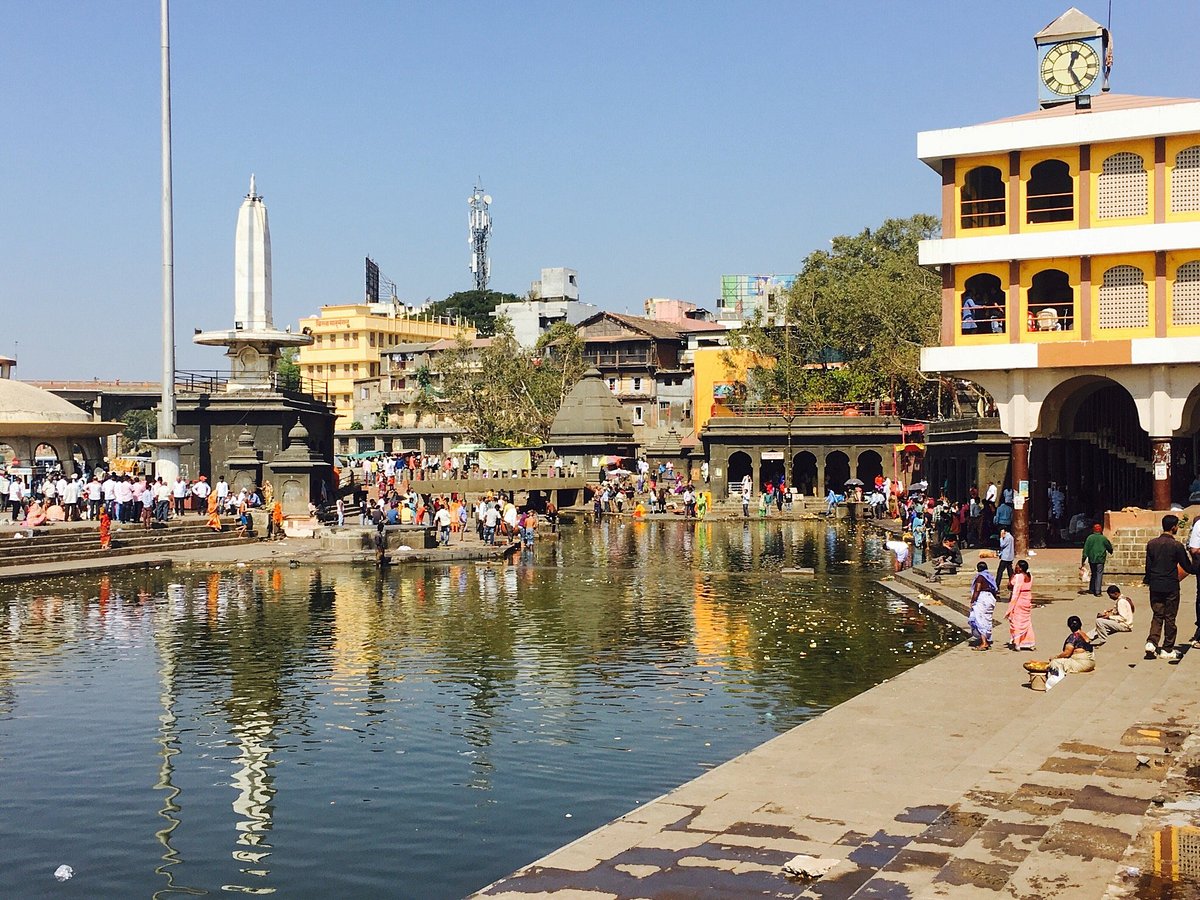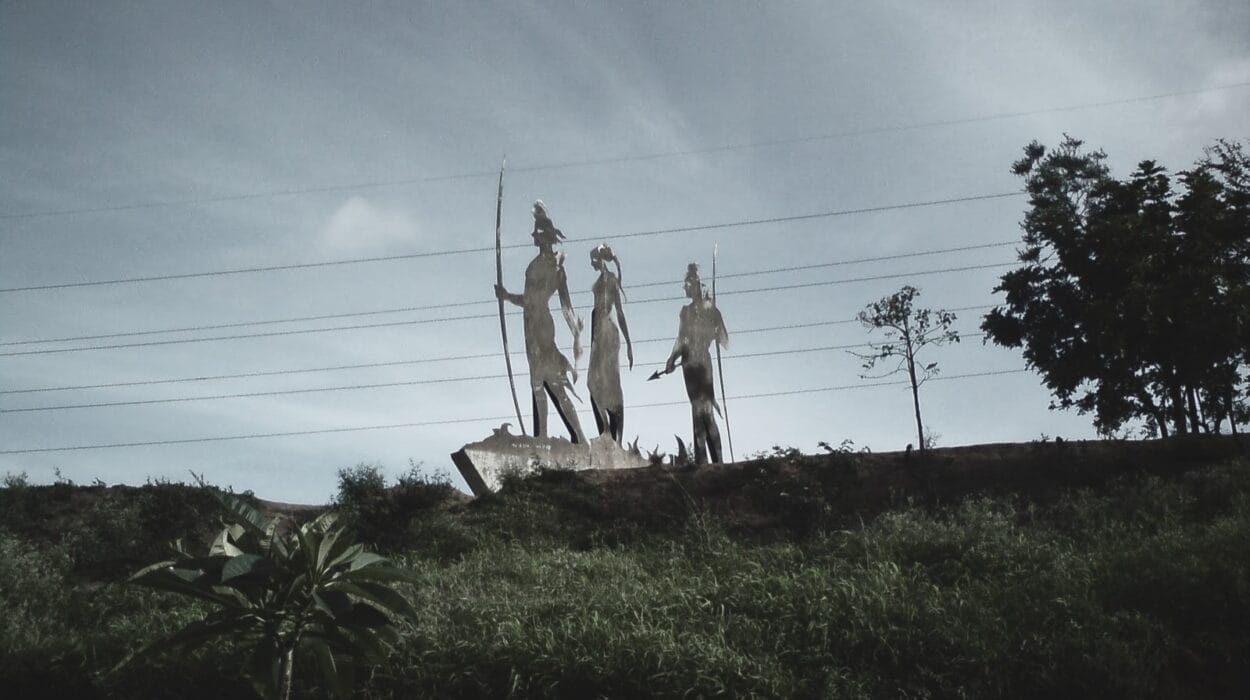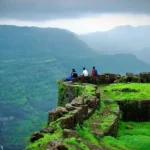Panchavati, a consecrated site settled close to Nashik, India, changes into a hypnotizing shelter during the rainstorm season. As downpour mists clear across the locale from June to September, Panchavati goes through a stunning transformation, decorated with lavish vegetation and graced by the captivating Godavari Stream. This holy spot is said to have been the home of Lord Rama and his brother Lakshmana during their exile, according to Hindu mythology. As the storm drops upon this holy land, it revives its environmental elements, welcoming the two explorers and sightseers to submerge themselves in its heavenly magnificence and participate in the happy merriments that proliferate during this captivating season.
Spiritual Significance
Hindu mythology and religious beliefs are deeply ingrained in the spiritual significance of Panchavati during the monsoon. Due to its connection to the epic Ramayana, this sacred site holds a special place in the hearts of devotees.
Hindu myths say that Panchavati is where Lord Rama, the seventh avatar of Lord Vishnu, lived with his loyal brother Lakshmana and wife Sita during their 14-year exile from the Ayodhya kingdom. The name “Panchavati” is gotten from the five banyan trees that were broadly planted by Master Rama at this spot.

The storm season holds a significant association with this sacrosanct site, for what it’s worth during this time that Panchavati blooms into a verdant safe-haven. The place takes on a more divine air because of the abundant rainfall, which gives rise to lush vegetation and vibrant flora. The timeless teachings of Lord Rama’s journey through difficult times with unwavering devotion and righteousness are reflected in the nature’s rejuvenation during the monsoon, which is often viewed as a symbol of hope, renewal, and spiritual growth.
For travelers and enthusiasts, visiting Panchavati during the rainstorm season is a valuable chance to interface with their confidence on a more profound level. They meditate amid the tranquil landscapes, seek solace and blessings from the divine, and perform religious rituals at the numerous temples and holy sites scattered throughout the region.
During this favorable time, Panchavati observes a flood of lovers who attempt profound excursions to look for endowments, atonement, and illumination. The monsoon season is a time of devotion, prayer, and reflection for many visitors due to the divine atmosphere and the connection to Lord Rama’s exile, enhancing Panchavati’s spiritual significance at this time of year.
Festivals and Celebrations
During the rainstorm season, Panchavati and its encompassing areas wake up with energetic celebrations and blissful festivals, adding to the all around profound atmosphere of the spot. These celebrations hold social and strict importance, drawing in the two local people and travelers from different pieces of the country. During this time, notable festivals and celebrations include:
Teej Celebration: Teej is a customary rainstorm celebration celebrated with excitement by ladies in Panchavati and adjoining regions. It occurs on the third day of the Shravana lunar month, which is the bright half of the month. In an effort to achieve marital bliss and ensure the well-being of their partners, married women observe fasts and offer prayers to Goddess Parvati. Vivid parades, society music, and dance exhibitions structure an essential piece of the festivals, displaying the rich social legacy of the district.

Rama Navami: The day Lord Rama, the main character in the Ramayana, was born is celebrated as Rama Navami. Fans visit the sanctuaries in Panchavati to offer their appreciation to Ruler Rama, looking for his gifts for a noble and prosperous life. Extraordinary supplications, bhajans (reflection tunes), and strict talks occur to respect the loved god.
Ganga Dussehra: Even though Panchavati is near the Godavari River, the Ganga Dussehra festival is still significant in this area. Celebrated on the 10th day of the brilliant portion of the lunar month of Jyeshtha, this celebration remembers the plunge of the Ganges Waterway from the sky to Earth. Travelers take plunges in the Godavari Waterway, taking into account it as a representative demonstration of sanitization.
Kumbh Mela: During the Kumbh Mela, a grand religious event held periodically in various cities, including Nashik, Panchavati is frequently a hub of activity. It is perhaps of the biggest strict gathering on earth, drawing in large number of enthusiasts and religious zealots who come to take a sacred dunk in the Godavari Stream to scrub their spirits and achieve otherworldly salvation.

Ganesh Chaturthi: Albeit not stringently a storm celebration, Ganesh Chaturthi is praised with extraordinary energy and commitment in Panchavati and Nashik. Lord Ganesha, the elephant-headed god of wisdom and prosperity, celebrates his birthday on this day. After days of worship and celebration, elaborate processions and community celebrations are held, culminating in the submersion of Lord Ganesha’s colorful idols in the Godavari River.
During the monsoon, these celebrations and festivals in Panchavati bring people together in their shared faith and cultural heritage, creating a one-of-a-kind atmosphere. The profound enthusiasm, social exhibitions, and the happy soul of the celebrations make this season a really captivating encounter for all who visit the hallowed place that is known for Panchavati.
Activities and Attractions
Panchavati offers a plethora of activities and attractions during the monsoon season, allowing visitors to take in the scenic beauty and spiritual atmosphere of the area. Whether you’re a nature fan, a pioneer looking for endowments, or basically a voyager looking for quietness, there’s something for everybody. During the monsoon, you can enjoy the following Panchavati attractions and activities:
Nature Walks: Investigate the rich vegetation and pleasant scenes of Panchavati through directed nature strolls. The rainstorm changes the environmental elements into a verdant heaven, making it the ideal opportunity to interface with nature and witness the magnificence of the district.

Sailing in Godavari Stream: On the holy Godavari River, take a relaxing boat ride. The monsoon rains make the river bigger, so you can sail through the gentle currents and enjoy a beautiful view of the hills and forests that surround you.
Temple Tours: Panchavati is home to a few old and loved sanctuaries. Visit the Sita Gufa (Cavern), where it is accepted that Sita took asylum during her exile, and the Kalaram Sanctuary, committed to Ruler Rama. Immerse yourself in the spiritual energy of these holy places and seek blessings.
Pandavleni Caves: Found relatively close to Panchavati, the Pandavleni Caverns are a progression of old Buddhist stone cut caves. While taking in the cool monsoon breeze, take in the intricate architecture and carvings from the first century BCE.
Tapovan: Take a trip to Tapovan, a tranquil forest location with mythological significance. It is accepted that Master Rama remained here during his exile. Experience reflection and serenity in the midst of the lavish green environmental elements.
Trimbakeshwar Temple: One of the twelve Jyotirlinga temples dedicated to Lord Shiva is the Trimbakeshwar Temple, which can be found close to Panchavati. Participate in the religious ceremonies and take in the magnificent architecture.
Sightseeing and Photography: By taking photographs, you can experience the magic of the monsoon. The flowing cascades, hazy slopes, and energetic scenes make for amazing shots.
Explore Nasik City: Spend some time exploring Nashik, a nearby city. Go shopping for handicrafts made in the area, explore the vineyards and wineries, and savor the delicious Maharashtrian cuisine.

Attend Cultural Events: During the monsoon season, look for cultural events, dance performances, and folk music concerts in the area. Experience the rich social legacy of the locale.
Adgaon Dam: Take a day trip to Adgaon Dam, a pretty reservoir with hills surrounding it. During the monsoon, the dam overflows, creating a mesmerizing sight.
Make sure to actually look at weather patterns and security rules prior to taking part in any outside exercises, as storm downpours can here and there be capricious. During the enchanting monsoon season, Panchavati provides a memorable experience whether you are looking for spiritual solace or simply want to take in the natural beauty.
How to Reach
You can follow these general directions to reach Panchavati:
By Air: The closest significant air terminal is Chhatrapati Shivaji Maharaj Worldwide Air terminal (BOM) in Mumbai. The closest airport to Panchavati is Nashik Airport (ISK), which can be reached by domestic flight from there.
By Train: Nashik Road Railway Station (NK), Nashik’s own railway station, is well-connected to India’s major cities. From the rail route station, you can recruit a taxi or utilize neighborhood transportation to arrive at Panchavati.
By Road: Nashik is very much associated with significant urban communities in Maharashtra and adjoining states through an organization of public parkways. You can head to Nashik from Mumbai, Pune, or other close by urban communities. Alternately, you can travel to Nashik by bus from a variety of cities via regular bus services.
By Local Transportation: When you arrive at Nashik, you can recruit nearby cabs, auto-carts, or utilize public transportation to arrive at Panchavati. You should use a GPS or ask the locals in Panchavati for directions to the place you want to go.
Make sure to check the climate and street conditions during the storm season, as weighty downpours might influence travel courses. Planning your trip in advance and having the contact information for dependable local transportation services on hand are always recommended.
Please keep in mind that specific travel options and routes may alter over time, so prior to planning your trip, you should check the most recent information from official sources or travel agencies.
Conclusion
All in all, Panchavati during the storm season offers an enamoring mix of profound importance, normal excellence, and social extravagance. As downpour showers douse the locale, Panchavati changes into a rich green safe-haven, making a captivating environment for explorers and vacationers the same.
Be prepared to be enthralled by the spiritual atmosphere, breathtaking scenery, and warm hospitality of the locals as you travel to Panchavati during the monsoon season. Whether you look for profound comfort, social drenching, or an important storm insight, Panchavati anticipates with great enthusiasm, prepared to captivate and enhance your spirit.
FAQs
What is the best time to visit Panchavati?
The best chance to visit Panchavati is during the storm season, which ordinarily happens from June to September. The weighty precipitation changes the locale into a rich green heaven, making it a captivating and profoundly critical experience.
What are the must-visit temples in Panchavati?
The Kalaram Temple, Sita Gufa (Cave), Tapovan, and Trimbakeshwar Temple are all must-sees in Panchavati. Devotees will find a peaceful setting at these sacred locations, which hold a great deal of religious significance.
How can I reach Panchavati from Mumbai?
Panchavati can be reached from Mumbai by air, train, or car. Chhatrapati Shivaji Maharaj International Airport in Mumbai is the major airport closest to you. You can then take a domestic flight to Nashik Airport from there. You also have the option of driving to Nashik and then traveling by road to Panchavati or taking a train to the Nashik Road Railway Station.
Are there any precautions to take during the monsoon season in Panchavati?
Indeed, during the rainstorm season, it’s fundamental to be ready for weighty precipitation. Convey proper downpour stuff, footwear, and umbrellas. When trekking or going to hilly areas, be careful because the paths may become slick. Remain refreshed on weather conditions estimates and street conditions.
What are some popular monsoon festivals celebrated in Panchavati?
Some well known rainstorm celebrations celebrated in Panchavati incorporate Teej, Rama Navami, Ganga Dussehra, and Kumbh Mela (during its planned period). These celebrations add to the social liveliness and profound meaning of Panchavati during the storm season.







